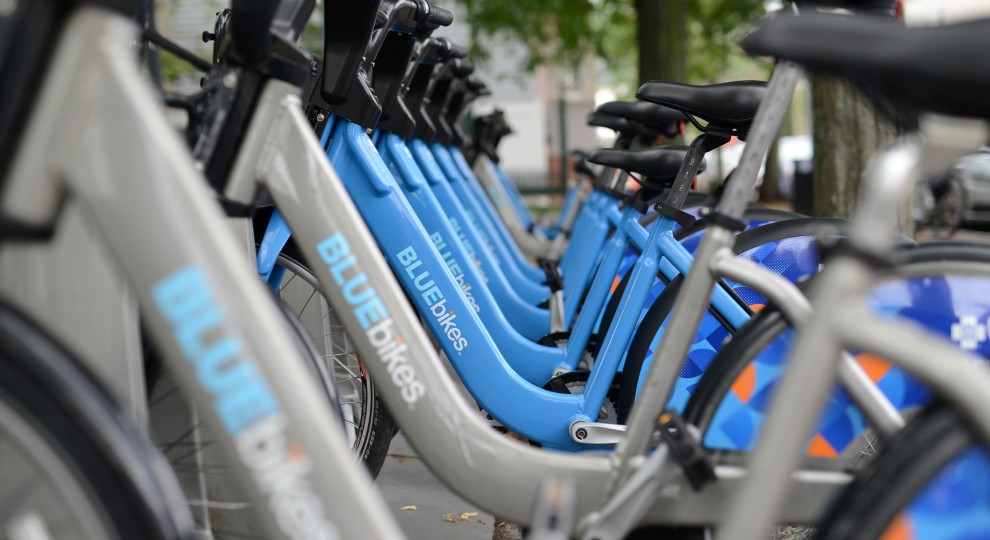
I started riding my bike to school in the third grade. Since I learned how to ride, it has been my preferred mode of transportation. Naturally, when I moved off campus this year, I began riding my bike to campus every day and when I was on co-op I did the same. I’ve never thought twice about it. Cycling is good for the mind, body, and environment, and can be cheaper than taking the T or a ride-sharing service. It’s a no-brainer.
When I tell people that I ride my bike to campus every day, the response is one of concern — that what I’m doing is incredibly dangerous.
The City of Boston, however, has a solution. It has slowly been making the bicycle an easier, safer, and more convenient method of transportation by adding protected bike lanes on major roads (most notably on Columbus Ave near ISEC) and initiating the new Blue Bikes program, an improved and expanded version of the Hubway bike system.
Blue Bikes is a public bike share program with more than 200 stations across Boston, including several on and around the Northeastern campus (behind Stetson East and in front of International Village). According to its website, the City of Boston hopes to eliminate all fatal and serious crashes between cyclists and drivers by 2030. They report that between 2007 and 2012, emergency medical technicians responded to 1,700 such accidents.
Although the initiative is a reasonable one, some Northeastern students have voiced that the network is not connected enough .
“I can’t always ride on streets with designated bike paths without significantly increasing my travel time. It’s not always worth it,” said Alec Donowitz, a third-year civil engineering major who commutes every day from Roxbury. “I see them making a lot of [effort] to make it better, but I would say generally, it’s not super safe.”
According to Donowitz, drivers are not adapting well to the changes — they’re ignoring new rules that make it easier to cycle in the street and even parking their cars in the new bike lanes.
“[Some] drivers are not paying attention at all. I see a lot of people on their phones,” said Donowitz.
No amount of bike-friendly signage can protect cyclists from irresponsible drivers, so these improvements will likely take time to change attitudes about the safety of riding a bicycle in Boston. In the meantime, cyclists in Boston can take certain precautions to make themselves safer on the road, although they aren’t always effective.
“I do arm signals for left, right, and when I’m slowing down. Other than that I just try to make myself visible and make eye contact with drivers. Sometimes that’s all I can do,” said Ian Anderson, a fourth-year computer science and design major. “My biggest fear is getting doored. I feel safest when the bike lane doesn’t have cars right next to it that can open their door and kill me.”
Geralyn Moore, a third-year electrical engineering major, recently had that fear realized.
“A couple weeks ago I got doored. It was terrifying. This guy was on his phone and wasn’t paying attention when he opened the door—it was not fun. I went over my handlebars, but I’m okay,” she said.
Moore said that she takes many precautions while riding, including wearing a helmet and blinking lights. Unfortunately, these aren’t always enough to prevent an accident.
Although Boston is becoming increasingly bike-friendly, it is clear that safety is very much on the minds of students who commute to work and school via bicycle but it doesn’t, and shouldn’t, deter us from riding every day.
As biking becomes a more popular and recognized means of transportation, I, like most, believe that drivers and infrastructure will have to adapt for the road to be a safer place for all. As for how long that will take, it’s unclear — but we’re on the right path.